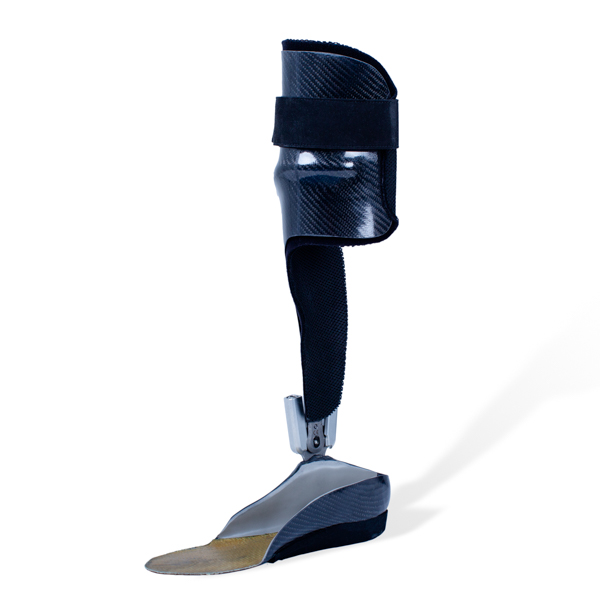Charcot-Marie-Tooth disease, or CMT, is caused by gene mutations that affect the normal function of the peripheral nerves. Sometimes these mutations damage the nerves themselves, others damage the myelin sheath which is the protective coating that surrounds the nerve. Both result in weaker messages being sent out to the limb extremities and back.
In the most common kinds of Charcot-Marie-Tooth, symptoms usually begin before the age of 20. They may include:
CMT is progressive though it does not affect life span.
In this video, you can see an adult Charcot Marie Tooth patient, walking barefoot (pre-assessment) and then post-assessment, with a pair of Neuro Swing AFOs fitted. You can see how the carbon fibre Neuro Swings improve his overall movement, balance, posture and confidence as he walks.
The patient reported improved comfort, with this new gait pattern putting less strain on his joints and muscles as he walks.
Read Neuroswing AFOs improve movement for this Charcot-Marie-Tooth patient.
Depending on the type and severity of an individual’s symptoms, bespoke orthotics can help to alleviate some problems associated with the condition. Ankle Foot Orthoses (AFOs) provide corrective forces and support to achieve a normal walking gait and provide protection.
For those with high-arched feet or hammer toes, specialist footwear may be prescribed.
Charcot-Marie-Tooth UK is an independent charity supporting those people living with the condition. It provides support, advice and information.

Neuro Swing Ankle Foot Orthoses can offer Charcot-Marie-Tooth patients increased comfort, support and balance when walking.
An AFO is an Ankle Foot Orthosis which as the name would suggest encompasses the ankle and foot. The objective is to control the position and movement of the ankle. AFOs are used to support weak limbs; they can also be used to immobilise the ankle and lower leg to correct foot drop. When set up correctly they can also have a great influence on the knee and hip joints. They are the most commonly used Orthoses.
The length of time that one needs to wear an AFO very much depends on the condition being treated. If it is a long-term condition like cerebral palsy or post-polio syndrome it is likely to be years as the condition cannot be cured. Your orthotist will advise you.
A patient’s comfort in their AFO is vital for compliance with the prescribed wearing regime.
So there are a number of steps the orthotist should take to ensure a comfortable fit: the patient’s heel should fit fully into the heel cup without excess space, the contours of the plantar surface of the AFO should match the patient’s foot, for children there needs to be up to half an inch growth room in the toe shelf length. At LOC we use our Gait Laboratories at our Kingston and Manchester clinics to fine-tune our bespoke orthotics.
The ability to drive while wearing an AFO is dependent on the condition being treated and the orthosis that has been prescribed. If wearing a hinged AFO, for example, you will be able to drive, but if wearing a knee brace, you won’t. Your orthotist will advise you.
The most flexible type of AFO is a Dynamic Ankle Foot Orthosis (DAFO). It is thin and provides flexible support to the foot and ankle.
The simple answer is: yes they can. However one has to be sensible and look for wide-fitting trousers/jeans preferably of light and thin material.

Sofia’s AFOs Help Her to Stand and Walk During Lockdown

LOC’s gait lab has helped Lilac to move independently

Sam Walmsley to explain OSKAR Framework to Neuro Conference 2021 Delegates

Meet John Turner – our Manchester Orthotics Lead

LOC to launch OSKAR Framework to CMSUK 2020 Delegates

OSKAR Clinic AFOs and gait laboratory are game-changers for cerebral palsy patient Austin

Cerebral palsy patient, Sophie, maintains independence during lockdown with LOC’s help